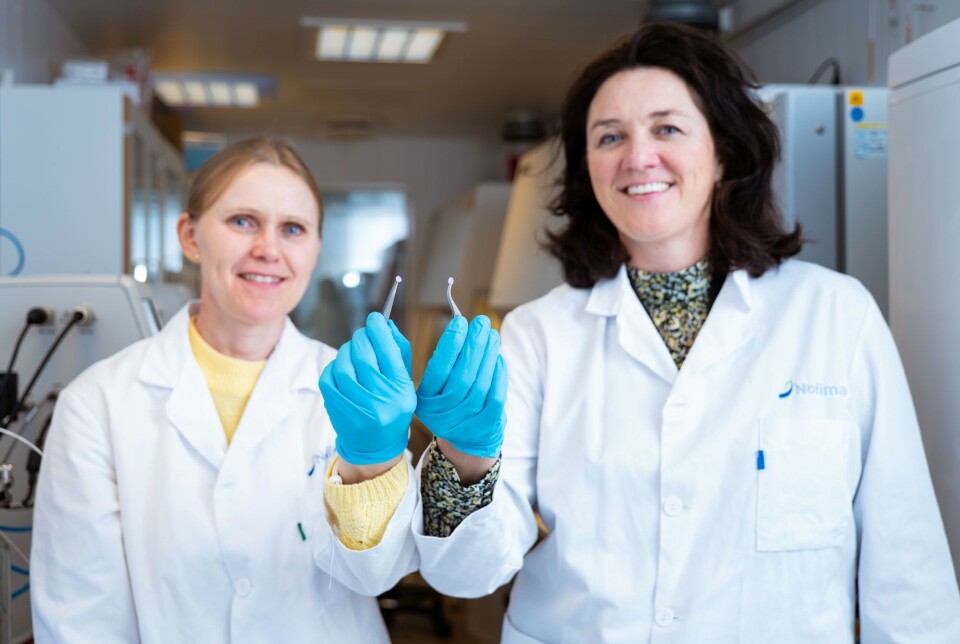
Proteins produced in the laboratory – how far has the development come
In Nofima's laboratories, scientists are making significant progress in their efforts to cultivate muscle cells from cattle and produce egg whites and milk proteins using yeast.
"Through our research, we’ve developed methods to cultivate bovine muscle cells on eggshell membranes. We’ve also been using a food-approved yeast to produce egg and milk proteins. Our next objective is to determine whether we can successfully scale up this production,” explains Senior Scientist Sissel B. Rønning at Nofima. She leads the ARRIVAL project, where most of this research is conducted.
Research on cultivated food in Norway began in 2018, with the onset of the GrowPro project. This was the first project on the topic funded by the Research Council of Norway (NFR). At that time, it was among the first international projects that focused on open, knowledge-based research. Since then, Nofima’s scientists have been thoroughly exploring new biotechnological processes for food production. The ARRIVAL project not only investigates biotechnological possibilities but also examines the societal opportunities and challenges associated with this type of food production.
Navigating the Future of Cultivated Meat: A Global Perspective and Norway’s Role
Advocates for cultivated meat and cell-ag proteins argue that these innovations can meet the growing demand for animal proteins due to population growth. They believe these alternatives can reduce greenhouse gas emissions, decrease land use, and water consumption, and improve animal welfare. However, opponents argue that these production methods could undermine traditional food and agricultural practices. They also call for more evidence to ensure the safety of human health.
A restaurant in Singapore has been serving chicken nuggets made from cultured meat for several years. Perfect Day, a US company, produces and sells milk proteins produced in yeast in the US and has just recently applied for a novel food approval, targeting the European market. Recently, the United States Food and Drug Administration approved the production of cultured chicken, and Israel has authorized the production of cultured beef. Conversely, Italian authorities are considering a ban on these products. France and Austria have also imposed restrictions, but not as stringent as Italy’s. The United Kingdom, Germany, Spain, and the Netherlands, on the other hand, are encouraging development by allocating funds and expediting approval processes.
Norway’s position on this issue is currently unclear. The Norwegian Board of Technology, a partner in the ARRIVAL project, plans to conduct a horizon scanning.
“We will begin with a comprehensive survey covering everything from technology and economics to consumer preferences and environmental impact. We will then identify focus areas and describe signals and trends. Based on these findings, we will develop recommendations and measures for policymakers,” says Tonje Nerby, a senior adviser at the Norwegian Board of Technology.
Cultivated Meat in Norway: Public perceptions and Priorities
Public opinion on cultivated meat varies widely. Some view it as an interesting, innovative, and environmentally friendly solution, while others find it unsettling and unnatural.
“In our study, we surveyed a thousand individuals, representing a diverse cross-section of Norway’s adult population. The most common associations with cultivated meat among Norwegians were ‘positive’, ‘interesting’, ‘unnatural’, ‘frightening’, ‘sceptical’, ‘innovative’, and ‘environmentally friendly’,” explains Senior Scientist Paula Varela-Tomasco at Nofima, who led the consumer study.
Interestingly, while 54 percent of the respondents had heard of cultured meat prior to the survey, over half were still uncertain about what cultured meat is. A new survey, targeting precision fermentation is now in the pipeline.
While taste typically tops the list in most surveys asking Norwegians about their food choices, this doesn’t hold true for cultured meat.
“In our study, we prompted participants to finish the sentence ‘I would eat cultured meat if…’. The majority responded with ‘it was cheap’, followed by ‘it was healthy’ and ‘it was safe’. Surprisingly, ‘it tasted good’ only came in as the fourth option,” confirms Paula Varela-Tomasco.
This is how we make the new proteins in the lab
At Nofima, scientists are attempting to create meat by cultivating muscle cells derived from cattle. “We’ve focused on identifying an edible, sustainable biomaterial that the cells can thrive on. Eggshell membranes, a byproduct, have proven to be a suitable medium as they contain structures like those in cattle and are rich in beneficial nutrients,” explains Senior scientist Mona E. Pedersen, who oversees this aspect of the project.
The process of producing animal food proteins in yeast is known as precision fermentation. “In our lab, we’re working on producing both egg and milk proteins. While this technology isn’t new—it’s been used since the 70s to produce insulin, for instance—what is novel is our use of it to create food proteins. We’re utilizing modern gene editing techniques, like CRISPR, to insert the gene for the specific protein we want to produce, enabling the yeast to yield the desired product,” says Senior Scientist Annette Fagerlund at Nofima.
The next phase involves testing the efficacy of scaling up and mass production.
Food produced in this manner is already available in the market in the US and several countries outside the EU, and numerous start-ups are aiming to replicate this success.
Read more
-
Cell-cultivated eel developer hails technological breakthrough
-
Food tech firm unveils combined cell-grown and plant-based tuna fillet
-
Forsea serves up its first cell-cultured eel
-
UK may be first European market for seafood grown from cells
-
Vietnamese shrimp processor to explore cell-grown seafood option
-
Cell-grown seafood developer raises $10.8m
-
Cell-based seafood firm's fundraising tops $30m
-
Cell-based seafood maker raises $60m for next step
































































